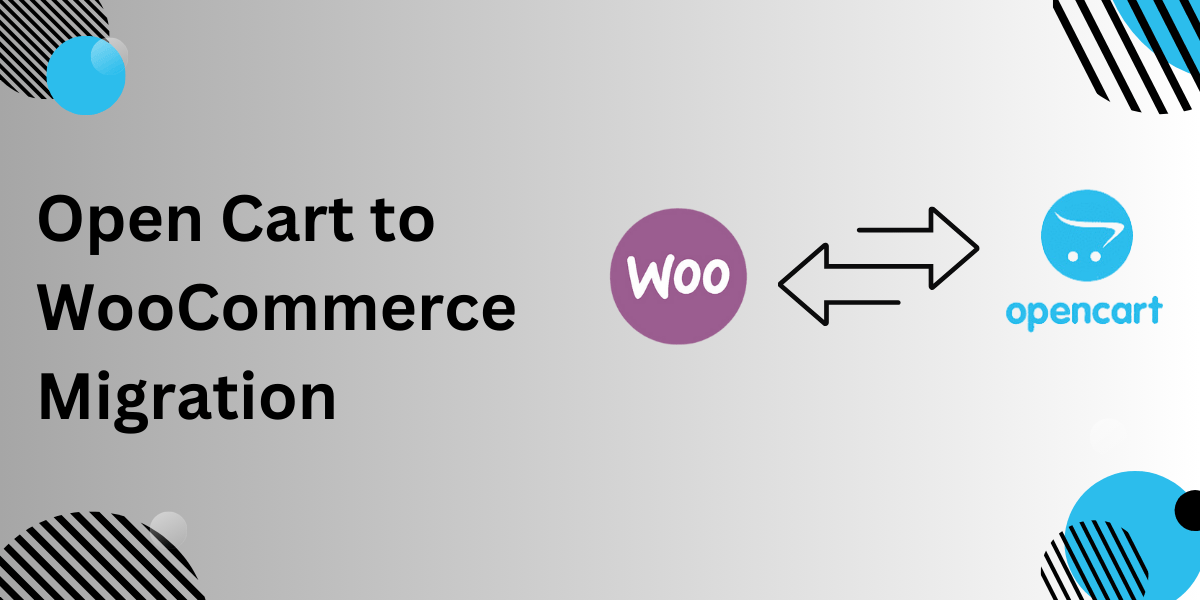Switching your online store from OpenCart to WooCommerce can seem like a big step, but it’s one that brings more flexibility, robust customization options, and a powerful ecosystem to support your growth. In this guide, we’ll break down how to transfer OpenCart to WooCommerce and explore how this move could benefit your business in the long term.
Why Move from OpenCart to WooCommerce?
1. Freedom with WordPress Plugins and Integrations
WooCommerce’s connection to WordPress unlocks a vast library of plugins, giving you flexibility to add features without coding.
2. Greater SEO and Content Capabilities
WooCommerce offers more robust SEO plugins and tools than OpenCart, so you can rank better and reach more customers organically.
3. Flexible Customization Options
WooCommerce enables you to modify your store layout, product displays, and checkout flow without relying heavily on third-party developers.
Getting Ready for the Migration
Switching eCommerce platforms requires some preparation. Here’s what to do before you dive into the transfer.
1. Set Clear Objectives
Ask yourself why you want to move to WooCommerce. Is it to gain more customization options, improve site speed, or have better control over SEO? Defining your goals will help you stay focused throughout the migration.
2. Backup Your Current OpenCart Data
Backing up your OpenCart data ensures you have a fallback if you encounter any issues. This should include product details, customer information, orders, and images.
3. Choose the Right Migration Tool
Selecting a reputable tool like Cart2Cart or LitExtension can make the transfer easier. These tools specialize in moving product data, customer info, and order history from OpenCart to WooCommerce.
Step-by-Step Migration Process
Step 1: Set Up WooCommerce on Your WordPress Site
Begin by installing WooCommerce on WordPress. This will be the core foundation of your new online store.
Step 2: Import Products and Data
Using a tool like Cart2Cart, you can start by transferring your products, customer data, and order history. These tools also allow you to map categories and customize data fields to fit WooCommerce’s structure.
Step 3: Transfer SEO Settings and URLs
To avoid losing your SEO rankings, migrate important metadata like meta titles and descriptions, and create URL redirects for pages on OpenCart that now have new URLs on WooCommerce.
Step 4: Optimize and Customize Your Store
Choose a WooCommerce-compatible theme and customize it to fit your brand. You can use the Elementor plugin for drag-and-drop design, allowing you to tailor product pages, cart flows, and checkout experiences.
Real-World Example: LocalMarket’s Transition to WooCommerce
Case: LocalMarket is a mid-sized online store that started on OpenCart. They wanted a more flexible eCommerce solution and a platform that could support SEO and blogging.
Solution:
- Migration Tool: They used transfer OpenCart to WooCommerce plugin for the bulk migration and did a small amount of manual data transfer to ensure accuracy.
- Design: Leveraged the Elementor plugin to make product pages more engaging and user-friendly.
- SEO Optimization: Installed Yoast SEO to improve rankings and manage meta tags.
Outcome: After the migration, LocalMarket noticed an increase in traffic due to better SEO and a boost in conversion rates, attributed to improved customer experience on the redesigned WooCommerce store.
Post-Migration Checklist
Once your OpenCart store has been successfully transferred, there are a few essential tasks to finalize your WooCommerce setup.
1. Enable Essential Plugins
WooCommerce offers many add-ons, from payment gateways to inventory management. Ensure all your desired features are enabled and working properly.
2. Update Shipping and Tax Settings
WooCommerce’s tax and shipping options are highly flexible. Customize them to fit your requirements, as they may differ from your previous OpenCart settings.
3. Test the Checkout Process
It’s essential to make sure the checkout process is seamless. This includes testing payment methods, shipping options, and account creation for a smooth user experience.
4. Review Analytics Setup
Enable Google Analytics with a WooCommerce integration to track user behavior, product performance, and conversion rates. This can provide insights to guide your future growth strategy.
5. Set Up SEO Redirects
To maintain your site’s SEO, set up 301 redirects for old OpenCart URLs to their new counterparts on WooCommerce. Plugins like Redirection make this simple and efficient.
Addressing Migration Challenges
Data Consistency
To maintain data integrity, use a reliable migration tool and double-check important data, such as product pricing and customer information, after the transfer.
Handling SEO and Redirects
If your OpenCart URLs differ significantly from WooCommerce URLs, setting up 301 redirects is crucial. This way, you won’t lose SEO rankings or traffic due to broken links.
Plugin Compatibility
Some OpenCart extensions may not have a direct WooCommerce alternative. If this is the case, consult the WooCommerce marketplace or a developer for custom solutions.
Advantages of Using WooCommerce Post-Migration
Switching to WooCommerce is more than just a move to a new platform; it’s a growth opportunity. Here’s what WooCommerce offers that you might not find on OpenCart.
Product Bundling and Upselling
WooCommerce supports plugins for upselling and cross-selling, allowing you to increase your average order value.
SEO and Content Marketing
WooCommerce’s content capabilities are tied to WordPress, giving you the tools to create rich content and better SEO performance. This can drive long-term traffic growth.
Advanced Analytics and Reporting
WooCommerce integrates seamlessly with Google Analytics, providing actionable insights that are easy to access within the dashboard.
Extensive Payment Options
With WooCommerce, you can access a wide variety of payment gateways. From traditional credit card processing to mobile wallets, your customers will have more options to complete their purchases.
Final Thoughts: A Smarter Store Awaits
If you’re looking to expand and need more customization options, WooCommerce is a solid choice. The migration may require effort, but the payoff—better SEO, flexibility, and control—is well worth it. With the right tools, careful planning, and a clear post-migration strategy, your WooCommerce store can become the eCommerce powerhouse you envision.
Frequently Asked Questions
1. Can I transfer customer reviews from OpenCart to WooCommerce?
Yes, migration tools like Cart2Cart typically allow customer reviews to be transferred along with product data.
2. Is there a risk of data loss during migration?
While risks exist, using reliable tools and backing up data significantly minimizes the chance of data loss.
3. Can I run both OpenCart and WooCommerce during migration?
Yes, you can keep both platforms operational during the migration, which allows you to test WooCommerce without disrupting the existing store.
4. Do I need a developer to complete the migration?
It depends on your technical skills. Migration tools simplify the process, but if custom features are needed, a developer can be helpful.
5. Will my WooCommerce store maintain SEO rankings after migration?
With proper SEO redirection and metadata migration, WooCommerce can retain or even improve your SEO rankings.
Read Also: Maximize Reach with Social Share for WooCommerce



